from 0 review
11 Days & 10 Nights
Daily Tour
Unlimited
___
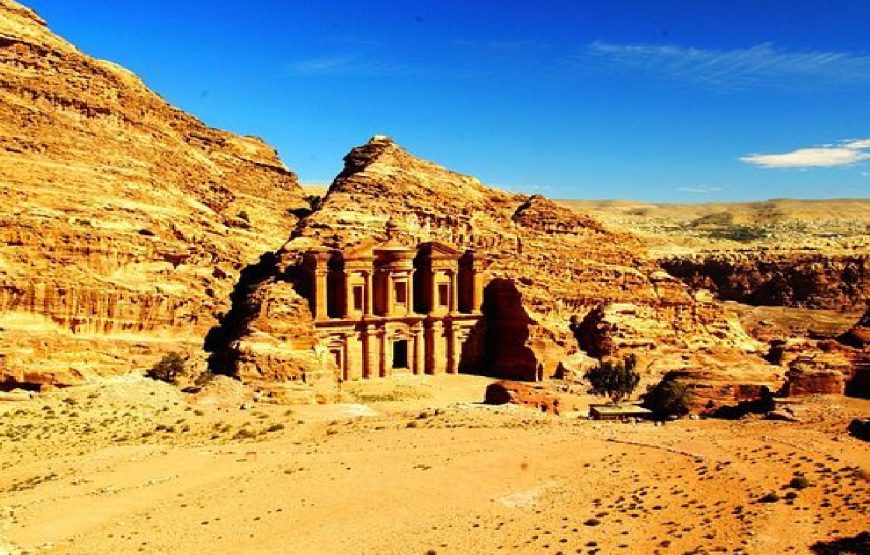
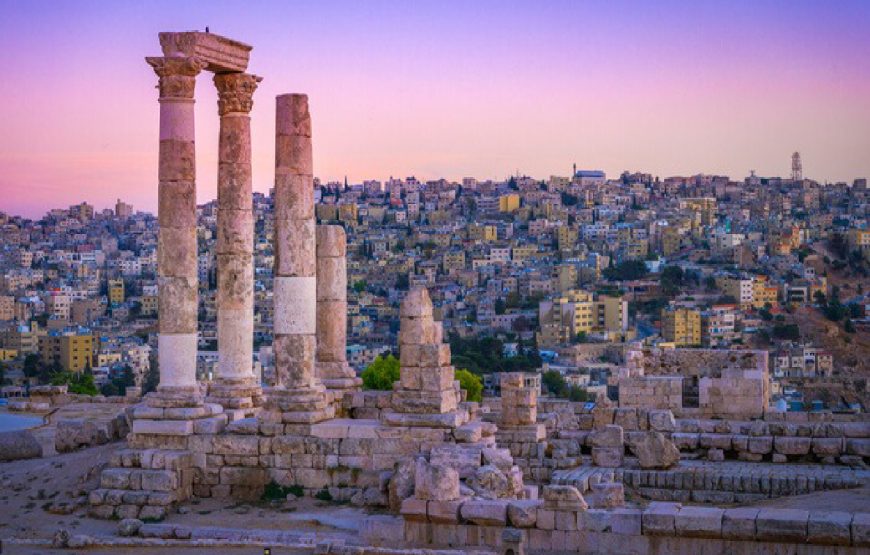
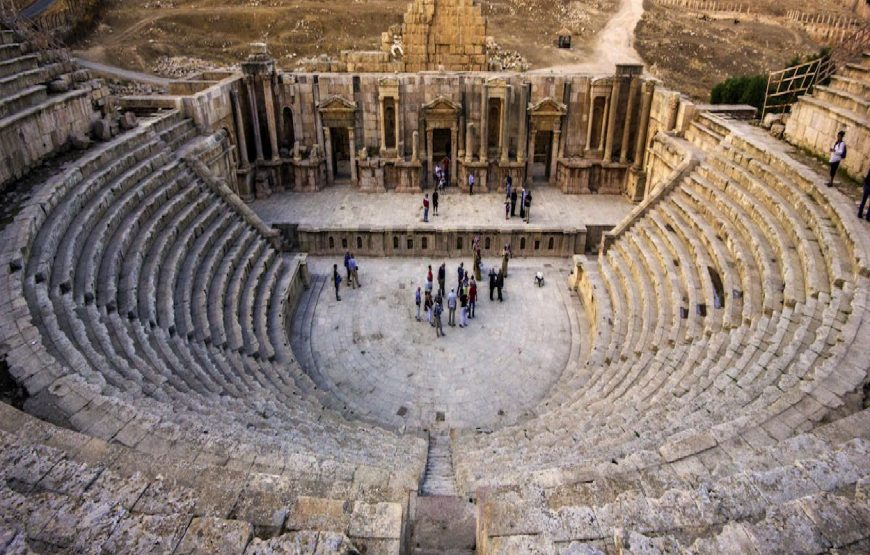
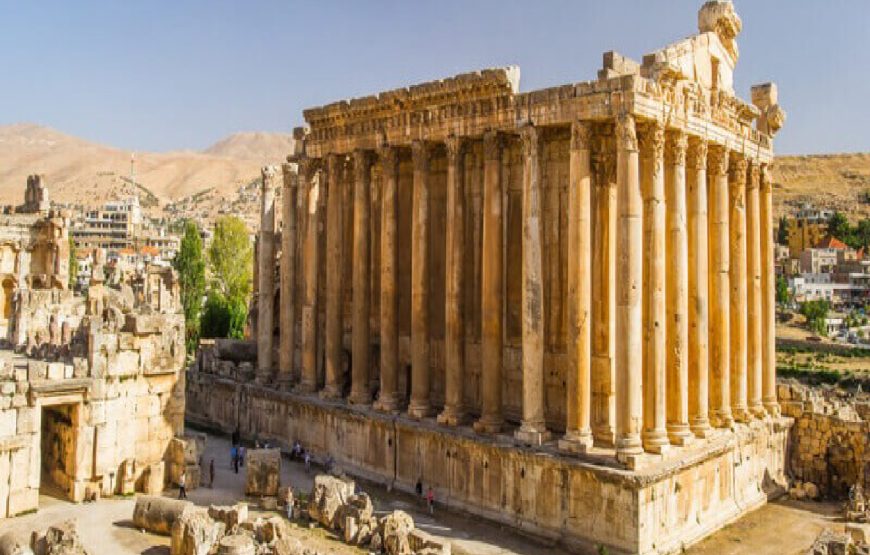
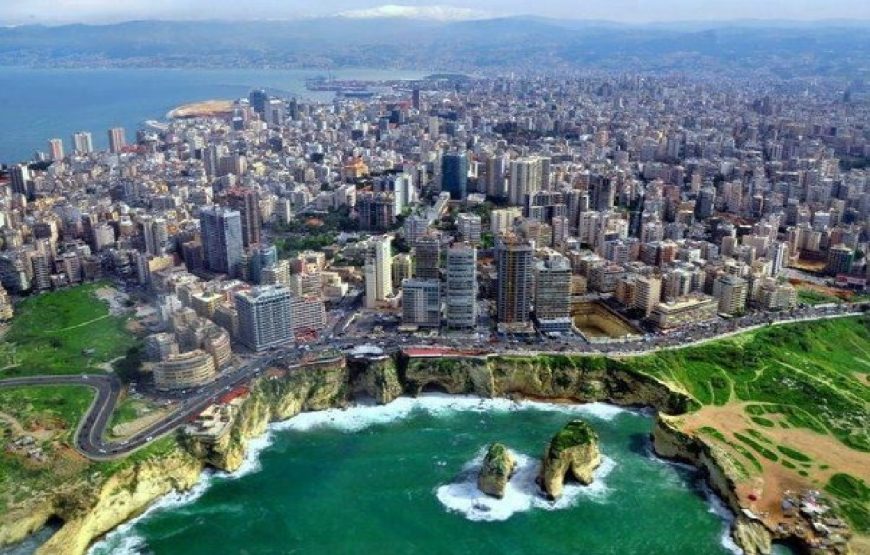
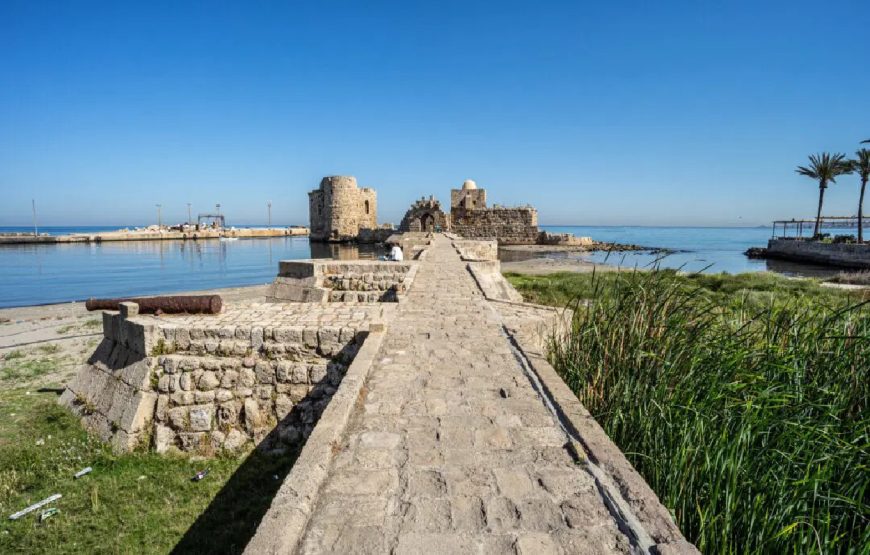
This is an excellent value The Jordan and Lebanon tour includes all of the main sights in each country and is designed to be cost-effective without sacrificing anything you see or do. Beginning in Amman, Jordan, we will visit the well-preserved Roman remains at Jerash before continuing on the scenic Kings Highway through the heart of Jordan, stopping to see the Roman Mosaics at Madaba, enjoy the views from Mount Nebo, marvel at the grandeur and size of Wadi Mujib, and explore the crumbling remains of the massive crusader castle at Kerak. This gets us to Jordan’s most popular site, the secret ‘Rose Red’ city of Petra. We scheduled a full day here, with a guided tour and free time to explore more. Next, we go on a 4×4 jeep safari through the beautiful desert scenery of Wadi Rum, which is famous for its rocky ‘jebels’ and links to Lawrence of Arabia. We’ll spend the night in a cozy Bedouin camp under the stars here. Then return to Amman, stopping to have a dip/float in the saline waters of the Dead Sea, which is a must-do experience. We’ll subsequently fly to Beirut (not included; see Day 6 of the itinerary). Arriving in Beirut, we head north to the stunning caverns of the Jeita Grotto before catching the cable car to Harissa, where you’ll be rewarded with 360° views of the Mediterranean shoreline and cities below. Next, we’ll explore the Baatara Gorge sinkhole and waterfall, which is another natural wonder. We’ll spend the night in a working monastery and hike through the Qadisha Valley and neighboring Cedars National Park before traveling to Byblos, which is often regarded as the world’s oldest continuously inhabited community. As we proceed with the tour, we schedule a stop to the Ksara Winery, where you may explore the caverns that are used as a wine cellar, and take a well-earned breather. Probably some of the most impressive visits we’ve had this week are our final ones. We will first tour the ancient Baalbek temple, which dates back at least nine thousand BC and is said to have been a place of devotion. Before heading back to Beirut, where our adventure will come to a close, we’ll also get the opportunity to explore the remarkably well-planned city of Anjar, which is nearby.
We'll be there to greet you when you arrive at the airport and take you to your hotel in Amman, the vibrant capital of Jordan. Once we assist you with your check-in and show you to any nearby stores, cafes, or eateries, you are free to go around Amman on your own before tomorrow's sightseeing begins.
We leave Amman early in the morning and go north to the nearby city of Jerash, which is home to one of the greatest and best-preserved examples of Roman architecture outside of Italy. Warmly called the "Jewel of the North," Jerash has more than 6,500 years of continuous human occupancy under its belt. After being covered in sand for ages, Jerash is now a wonderful example of the formal, majestic provincial Roman urbanism that is prevalent throughout the Middle East thanks to renovations and evacuations carried out during the previous 70 years. We spend the afternoon touring Amman, also referred to as the "white city," because of the overwhelming amount of white limestone structures there. We had returned from our trip to Jerash. With multiple excavations and renovations revealing artifacts from the Neolithic, Hellenistic, late Roman, and Arab Islamic eras, Amman boasts a rich history spanning many millennia.
The Umayyad Palace, the Byzantine Church, and the Citadel—the site of the old Temple of Hercules—will all be on our itinerary. We will also take a tour of the 6000-seat Roman Theatre, which was built during Philadelphia's Roman era.
Today, we leave Amman behind and go to Petra along the picturesque King's Highway. The drive is breathtaking, offering you a unique glimpse into the everyday lives of the people as we go through isolated rural communities, deep wadis, and olive trees. Our first destination will be Madaba, where we will see the Greek Orthodox Church of St. George, which is well-known for its Byzantine mosaic map of the Holy Land and other biblical locations from the sixth century. We'll then ascend Mount Nebo, which provides breathtaking vistas of the Holy Land. Once again, we'll take to the road and cross the stunning Wadi al-Mujib, which meanders past olive trees and then climbs over a steep canyon to arrive at Kerak Castle. This castle is one of several Crusader fortresses constructed in the 12th century along the caravan route between Egypt and Syria. We'll check into the hotel when we get to Petra, and the rest of the evening is yours to unwind and explore. There is a chance to experience Petra for the first time with the evocative Candlelight Petra trip that takes you through the Siq to the Treasury.
Today is dedicated to visiting the ancient Nabatean site of Petra. Up to the Roman conquest in 106 AD, it served as the capital of the Nabataean trading empire in antiquity. Petra was largely forgotten, save for the Bedouin population living there, until the Swiss explorer Johann Ludwig Burckhardt rediscovered it in 1812. Petra is located on the edge of the Wadi Aruba desert, almost impossible to reach because to huge hills and canyon walls, unless one uses the Siq, a thin gap in the rock. Petra has a very small number of free-standing structures since the Nabateans opted to sculpt their homes into the cliffs' multihued sandstone. Petra has emerged as a primary tourist destination in Jordan, a fact that the Jordanian government is cognizant of. Wadi Musa, the nearby village, has a thriving tourism industry. Fortunately, once you pass through the Siq, the site is protected, there aren't many touts or souvenir merchants, and the buildings all feel very far away. Today, we get the majority of the day to explore this historic city. A two to three hour guided tour is followed by free time for solo exploration. We begin by traversing the Siq, which climbs to a height of 200 meters above us and at various points narrows to only 2 meters in width. Look out for the remains of the clay pipes that supplied water to the city, as well as the old Nabatean water channel, which is still visible on one wall. After we round a bend, the Khazneh (Treasury), one of the most recognizable views in Petra, will suddenly appear in front of you. Our guide will go over the spiritual significance of the building style and explain how this and the other buildings here are primarily ornate façade cut into the rock from the top down. The valley spreads out from the Treasury, and on either side are tombs etched into the rock. In your spare time, you can stroll up a steep and narrow winding gorge to the towering "Monastery," which is 50 meters high and 45 meters wide and offers breathtaking views of the Wadi Aruba desert and the Jordan Valley. You'll also catch a glimpse of the abandoned Roman amphitheatre and colonnaded streets. You can reach the Lion Fountain and the High Place of Sacrifice by making one more climb. All in all, visiting one of the most well-known ancient monuments in the world is a busy and exhausting but incredibly rewarding day trip. The minimum walking lengths required today are 3 km through the Siq to the Treasury and back, where you can also see a few tombs; 8 km to walk the trail all the way to the main basin; and a few more miles (more than 800 stairs up and down) to the Monastery and back. Horse carriages are available for hire for around 20JD (USD 28) and may transport you for 1.2km through the Siq to the Treasury and back at a prearranged time, ideal for individuals with limited mobility or those who are concerned about the distance. At an additional cost, they will also let you navigate the website farther. Riding the horses that are available is not something we advise. The steps leading up to the monastery have donkeys available for use; if you choose to utilize them, we recommend doing so on the way up rather than the way down.
We depart Petra later in the afternoon and travel into Wadi Rum, a breathtaking desert landscape. We are greeted at a cozy camp by our gracious Bedouin hosts, who are perched beneath towering rocks and cliffs. We unwind at the camp throughout the evening and night while eating a delectable traditional Jordanian dinner and taking in the stars.
We get an early start to the day and explore Wadi Rum's breathtaking desert and mountain landscape. Look out for the stone formations known as "jebels," which have a coppery hue. TE Lawrence was captivated by these formations during his trips into the desert during the Arab Revolt, and they were included in the film Lawrence of Arabia. We'll go on a jeep safari through the breathtaking desert landscape to get a closer look at the odd rock formations and sheer cliffs. Later in the morning, we bid farewell to Wadi Rum and go north to the Dead Sea, one of the most breathtaking places on Earth. Many rivers, including the Jordan River, feed into the Dead Sea. The waters evaporate at the Dead Sea because they are landlocked and unable to continue, leaving behind a rich and dense mixture of minerals and salts that provide some of the best goods for industry, agriculture, and medicine. The Dead Sea has an almost surreal beauty because it is surrounded by mountains to the east and Jerusalem's undulating hills to the west. It is thought that the region was formerly home to five Biblical cities: Sodom, Gomorrah, Adman, Zebouin, and Zoar (Bela). Despite being little populated and peacefully quiet today, this is not the case. Along the way, we'll pause for a "swim," albeit the extremely salty waters make for an unusual swimming experience. Actually, floating, sitting, or reclining in the water is more convenient (and more Instagram-worthy!) than swimming normally. Water can hurt your eyes, so take care not to get any in them.Where we swim, there will be showers to help us rinse off the salt water. We also provide the option to stay here for your last night in Jordan rather than going back to Amman if you'd like to spend some extra time at the Dead Sea for spa treatments and/or relaxation. We end the day by returning to our Amman hotel.
We depart Jordan today and take you to the airport in Amman so you can catch your flight to Beirut. When you get there, we'll greet you at the airport and take you to your hotel so your journey can begin. After assisting with your check-in, we'll give you some free time to unwind or go about Beirut on your own.
Note: It is usually more economical for you to include the Amman-Beirut flight as part of your primary international flight ticket, so it is not included in the fixed trip price. Depending on what works best for you, we are happy to book all of your overseas flights, only this Amman-Beirut flight, or none at all. Both Egypt Air and Middle Eastern Airlines offer direct flights. You can fly at any time during the day - all transfers in Amman and Beirut are included.
We depart from the capital city of Beirut this morning and head north, stopping along the way to explore the breathtaking Jeita Grotto. You get the opportunity to explore a portion of the nearly 9km-long network of limestone caves here. It makes sense that the caves are seen as a symbol of Lebanon because they are home to one of the greatest collections of stalactites and stalagmites in the entire world and were a nominee for the New 7 Wonders of Nature award. Our next destination is Harissa, which is well-known for its Christian shrine perched atop a mountain and devoted to the Virgin Mary. To see the church and take in the breathtaking views of the coastline, we'll ride the cable car up. The remarkable Baatara Gorge sinkhole is our last destination of the day. Here, a 255-meter waterfall plunges into an enormous cavern throughout the spring and after periods of rain. Here, we'll have time for a quick climb and exploration of the neighboring Douma Village, which includes a traditional lunch. After a short journey, we spend the night in the Monastery of St. Anthony, located in a separate building with basic but comfortable en suite accommodations. If the monastery is closed to tourists or unavailable, we will stay at a neighboring guesthouse. The day ends with a short drive to the stunning Qadisha Valley.
You can join the monks in the monastery for their early morning prayers if you're an early riser. There will be opportunity to tour a portion of the Qadisha Valley, another UNESCO World Heritage Site, following breakfast. The Nahr Qadisha, also known as the Holy River, flows through the Qadisha Valley, which is also called the Holy Valley. Its sheer cliffs are home to numerous caverns that were utilized as shelter in the past. Our first destination after emerging from the valley is the village of Becharre, which is well-known for being the birthplace of the renowned novelist and poet Kahlil Gibran. A modest museum honoring him is located in the hamlet, and inside are some of his manuscripts and drawings. We will next travel to the Cedars Ski Resort, which is well-known for being one of the few ski resorts in the Middle East. Nearby lies the area known as the Cedars of God, which is home to some of the final stands of the cedar forests that were formerly abundant in this area. Even referenced in the Old Testament, the Lebanon Cedars, or Cedrus Libani, have come to represent the country. We travel to Byblos later today, an ancient Phoenician city that may have been inhabited for as long as 7000 years. Jbeil is the local name for the city, which is also a UNESCO World Heritage site. In addition to having several important historical and archeological monuments, Byblos has a beautiful Phoenician harbor.
This morning you'll have some free time to explore the markets and coastline of Byblos further before we head back in land to continue our journey. Our destination today will be the village of of Zahle, however we'll be making a stop along the way at the Ksara Winery which is possibly the oldest winery in Lebanon. The caves and tunnels have a total length of approximately 2 miles and have been unsed for generations as wine cellars. You'll have a guided tour of the caves and winery before sampling (and buying if you wish) some of the produce in a wine tasting session. Today is going to be really exciting for you since we'll be visiting the amazing location of Baalbek. Called 'Heliopolis' or 'City of the Sun' by the Greeks and Romans, it has a shrine where the Heliopolitan triad of gods—Jupiter, Venus, and Mercury—are worshipped. Thousands of pilgrims would swarm the temple in the past to worship the trio. The temple is still astonishingly well kept today. We will stop at the adjacent Umayyad city of Anjar, which is situated in the Bekaa Valley, after departing from Baalbak. The city was established in the eighth century by Caliph Walid, and little is left of it today provides valuable insight into the superior town design that must have occurred. You'll witness baths, castles, and mosques. Additionally, the old city of Anjar contained up to 600 stores, demonstrating the significance of the area as a commerce hub in the past.
We take a journey back to Beirut to spend the night there to round off the day.
Today is going to be really exciting for you since we'll be visiting the amazing location of Baalbek. Called 'Heliopolis' or 'City of the Sun' by the Greeks and Romans, it has a shrine where the Heliopolitan triad of gods—Jupiter, Venus, and Mercury—are worshipped. Thousands of pilgrims would swarm the temple in the past to worship the trio. The temple is still astonishingly well kept today. We will stop at the adjacent Umayyad city of Anjar, which is situated in the Bekaa Valley, after departing from Baalbak. The city was established in the eighth century by Caliph Walid, and little is left of it today provides valuable insight into the superior town design that must have occurred. You'll witness baths, castles, and mosques. Additionally, the old city of Anjar contained up to 600 stores, demonstrating the significance of the area as a commerce hub in the past.
We take a journey back to Beirut to spend the night there to round off the day.
On this final day of the tour, you are free to continue seeing Beirut until you are driven to the airport to catch your flight home.
Leave a reply